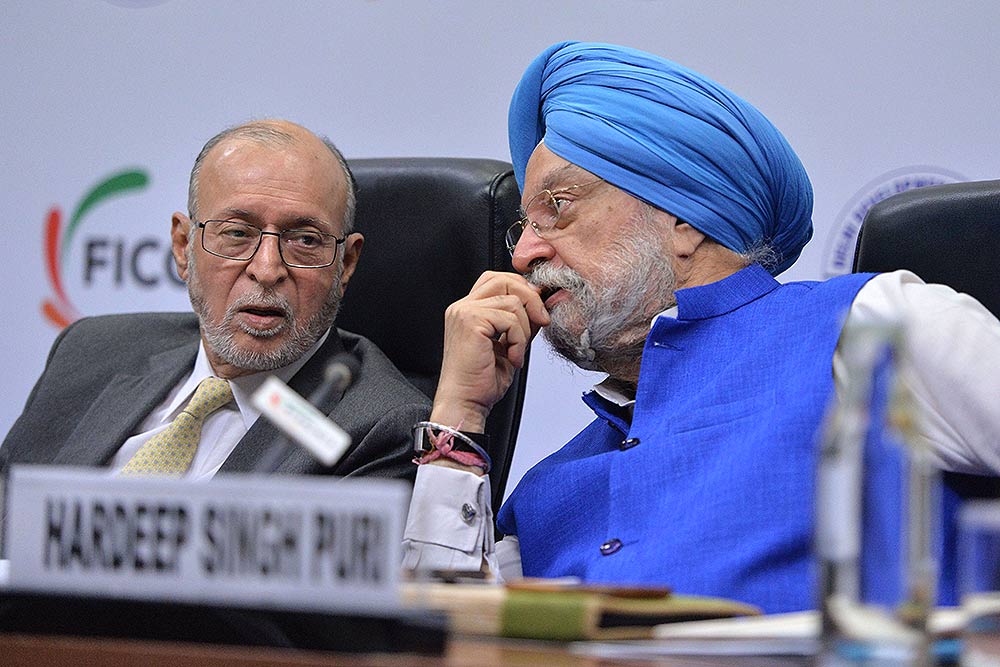Maharashtra had a population of 1.18 crore living in slums in 2011, followed by Andhra Pradesh at nearly 1.02 crore. At 2.20 crore, these two states accounted for more than one-third of India’s 6.55 crore slum population (2011 Census). The nationwide total and the breakup for states were presented in Rajya Sabha last week by the Minister of State (independent charge) for Housing and Urban Affairs, Hardeep Singh Puri, in response to a question raised by DMK member Tiruchi Siva.
Maharashtra’s 1.18 crore slum population was living in 25 lakh households, and Andhra Pradesh’s 1.02 crore in a little over 24 lakh households. All 125 statutory towns in Andhra Pradesh, and 189 of 256 in Maharashtra, were slum-reported towns. The highest number of slum-reported towns, however, was not in either of these states but in Tamil Nadu, at 507 out of 721 statutory towns, followed by Madhya Pradesh (303 out of 364) and Uttar Pradesh (293 out of 648). Tamil Nadu had a slum population of 58 lakh, Madhya Pradesh had nearly 57 lakh and Uttar Pradesh had 62 lakh. In terms of slum population, however, next to Maharashtra and Andhra Pradesh was West Bengal at 64 lakh (it had 122 slum-reported towns out of 129 statutory towns).
During the last four years, the ministry sanctioned 72,80,851 houses in slums, grounded 38,67,191 houses, and completed 14,75,879, while 3,14,765 houses were unoccupied. —Source for all data: Housing & Urban Affairs Ministry, Rajya Sabha.
FROM ancient astrology and mathematics to modern astronomy, the study of the stars has always fascinated humans. Ken Hollings, a writer, broadcaster, and cultural theorist based in London, looks at at the relationship between humans and the cosmos, reinventing the history of astronomy as a new form of astrological calendar. The findings of astronomers have never remained confined within observatory walls; The Space Oracle: A Guide to Your Stars looks at what happens when astronomy escapes into the wider human world, and finds purposes beyond the scientific. It goes back to places and times when astronomers were treated as artists or priests, and brings into alignment astronauts and spies, engineers and soldiers, goddesses and satellites.
“His book’s 12 chapters echo the 12 houses of the zodiac. It is not a defence of astrology, though, rather, a wonderfully impressionistic exploration of how we have tried to make sense of the stars, from ancient cultures such as the Maya and the medieval idea that astronomy was an art, to the ‘lost cosmonauts’ – the Soviet astronauts who preceded Yuri Gagarin but never returned, their capsules lost in space,” The Guardian describes the book in its review. It adds: “Hollings’s beautifully written account takes the reader on some delightfully unexpected cosmic journeys. A riff on how, through polished glass, stars look like snowflakes, leads to Robert Hooke’s comparison of snowflakes and urine crystals, and ends with an Apollo astronaut describing how in space ‘a urine dump at sunset’ was ‘the most beautiful sight in orbit’.”

देश में एक करोड़ यात्री प्रतिदिन कर रहे हैं मेट्रो की सवारी: पुरी ..

Union Minister for Petroleum and Natural Gas and Housing and Urban Affairs, Hardeep Singh Puri addressing a press conference in ..

Joint Press Conference by Shri Hardeep Singh Puri & Dr Sudhanshu Trivedi at BJP HQ| LIVE | ISM MEDIA ..
(3).jpg)
"I wish a speedy recovery to former Prime Minister Dr Manmohan Singh Ji. God grant him good health," Puri wrote. ..